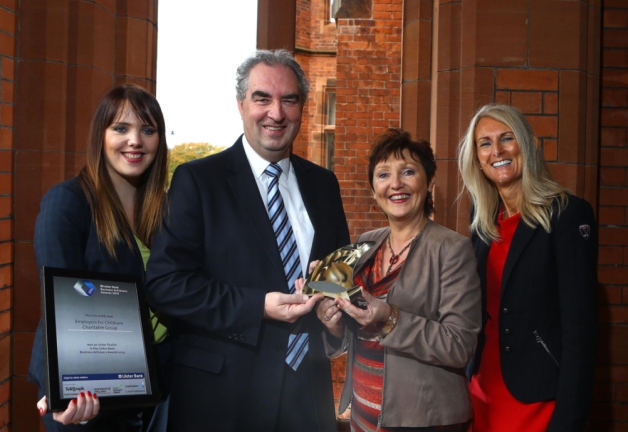Government Grants
Business Grants
Home Owner Programs
Federal Programs
About Us
U.S. Embassy Beirut Ambassador's Fund for Cultural Preservation (AFCP) 2023 NOFO
The Department of State established the AFCP in 2001 at the request of Congress (Conference Report 106-1005 accompanying H.R.
4942).
At the time, the Senate noted that the preservation of cultural heritage “offers an opportunity to show a different American face to other countries, one that is non-commercial, non-political, and non-military.” The projects recommended for funding advance U. S. foreign policy goals and show respect for other cultures.
Cultural preservation is effective public diplomacy that resonates deeply with opinion leaders and local communities, even in countries where ties may be otherwise limited.
AFCP projects strengthen civil society, encourage good governance, and promote political and economic stability around the world.
The AFCP Grants Program supports the preservation of archaeological sites, historic buildings and monuments, museum collections, and forms of traditional cultural expression, such as indigenous languages and crafts.
Appropriate project activities may include:
a) Anastylosis (reassembling a site from its original parts);b) Conservation (addressing damage or deterioration to an object or site);c) Consolidation (connecting or reconnecting elements of an object or site);d) Documentation (recording in analog or digital format the condition andsalient features of an object, site, or tradition);e) Inventory (listing of objects, sites, or traditions by location, feature, age,or other unifying characteristic or state);f) Preventive Conservation (addressing conditions that threaten or damage asite, object, collection, or tradition);g) Restoration (replacing missing elements to recreate the originalappearance of an object or site, usually appropriate only with fine arts,decorative arts, and historic buildings);h) Stabilization (reducing the physical disturbance of an object or site).
Sites and Objects Having a Religious Connection:
The establishment clause of the U. S. Constitution permits the government to include religious objects and sites within an aid program under certain conditions.
For example, an item with a religious connection (including a place of worship) may be the subject of a cultural preservation grant if the item derives its primary significance and is nominated solely on the basis of architectural, artistic, historical, or other cultural (not religious) criteria.
Funding Priorities:
Some of the most impactful AFCP projects have been designed as part of a greater PD programming arc promoting specific U. S. policy goals and host country or community objectives.
Accordingly, in FY2023, ECA will give preference to projects that do one or more of the following:
a) Directly support U. S. treaty or bilateral agreement obligations.b) Directly support U. S. policies, strategies, and objectives in a country asstated in the Integrated Country Strategy or other U. S. governmentplanning documents.c) Support disaster risk reduction for cultural heritage in disaster-prone areasor post-disaster cultural heritage recovery.d) Partner, connect with, or feed into other ECA or public diplomacy programs.
B.
PROGRAM INFORMATION:
Closing date for Round One (concept notes):
Monday, December 26, 2022Expected size of individual awards:
$10,000 to $500,000Closing date for Round two:
Monday, April 3, 2023
4942).
At the time, the Senate noted that the preservation of cultural heritage “offers an opportunity to show a different American face to other countries, one that is non-commercial, non-political, and non-military.” The projects recommended for funding advance U. S. foreign policy goals and show respect for other cultures.
Cultural preservation is effective public diplomacy that resonates deeply with opinion leaders and local communities, even in countries where ties may be otherwise limited.
AFCP projects strengthen civil society, encourage good governance, and promote political and economic stability around the world.
The AFCP Grants Program supports the preservation of archaeological sites, historic buildings and monuments, museum collections, and forms of traditional cultural expression, such as indigenous languages and crafts.
Appropriate project activities may include:
a) Anastylosis (reassembling a site from its original parts);b) Conservation (addressing damage or deterioration to an object or site);c) Consolidation (connecting or reconnecting elements of an object or site);d) Documentation (recording in analog or digital format the condition andsalient features of an object, site, or tradition);e) Inventory (listing of objects, sites, or traditions by location, feature, age,or other unifying characteristic or state);f) Preventive Conservation (addressing conditions that threaten or damage asite, object, collection, or tradition);g) Restoration (replacing missing elements to recreate the originalappearance of an object or site, usually appropriate only with fine arts,decorative arts, and historic buildings);h) Stabilization (reducing the physical disturbance of an object or site).
Sites and Objects Having a Religious Connection:
The establishment clause of the U. S. Constitution permits the government to include religious objects and sites within an aid program under certain conditions.
For example, an item with a religious connection (including a place of worship) may be the subject of a cultural preservation grant if the item derives its primary significance and is nominated solely on the basis of architectural, artistic, historical, or other cultural (not religious) criteria.
Funding Priorities:
Some of the most impactful AFCP projects have been designed as part of a greater PD programming arc promoting specific U. S. policy goals and host country or community objectives.
Accordingly, in FY2023, ECA will give preference to projects that do one or more of the following:
a) Directly support U. S. treaty or bilateral agreement obligations.b) Directly support U. S. policies, strategies, and objectives in a country asstated in the Integrated Country Strategy or other U. S. governmentplanning documents.c) Support disaster risk reduction for cultural heritage in disaster-prone areasor post-disaster cultural heritage recovery.d) Partner, connect with, or feed into other ECA or public diplomacy programs.
B.
PROGRAM INFORMATION:
Closing date for Round One (concept notes):
Monday, December 26, 2022Expected size of individual awards:
$10,000 to $500,000Closing date for Round two:
Monday, April 3, 2023
Relevant Nonprofit Program Categories
Obtain Full Opportunity Text:
https://grants.nih.gov/grants/guide/rfa-files/RFA-DA-24-002.html
Additional Information of Eligibility:
Eligible Project Implementers must be reputable and accountable non-commercial entities that can demonstrate they have the requisite capacity to manage projects to preserve cultural heritage.
Eligible implementers may include non-governmental organizations, museums, educational institutions, ministries of culture, or similar institutions and organizations, including U.S.-based educational institutions and organizations subject to Section 501(c)(3) of the tax code.
The AFCP will not award grants to individuals, commercial entities, or past award recipients that have not fulfilled the objectives or reporting requirements of previous awards.
Potential implementers must be registered and active in the U. S. government’s System for Award Management (SAM) to receive U. S. federal assistance.
All project activities must take place in Lebanon, and inclusion of cost share is highly encouraged.
Full Opportunity Web Address:
http://grants.nih.gov/grants/guide/rfa-files/RFA-DA-24-002.html
Contact:
Agency Email Description:
For inquiries and submission
Agency Email:
Date Posted:
2022-11-16
Application Due Date:
Archive Date:
2023-01-25
Social Entrepreneurship
Spotlight
Childcare Charitable Group Named Top Social Enterprise

Employers For Childcare Charitable Group (EFCG), a Lisburn-based charity, has been crowned top Social Enterprise at the Ulster Final of 2014’s Ulster Bank Business Achievers Awards. EFCG seeks to “make it easier for parents with dependent children to get into work and to stay in work.”

